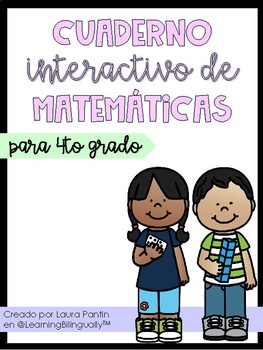Cuaderno interactivo de matemáticas (4to grado)
- PDF
Description
Este recurso contiene actividades e información para cada estándar de matemáticas de 4to grado para un cuaderno interactivo. Todas las paginas tienen el mismo formato de pagina rectangular, pero cada pagina tiene partes donde los estudiantes deben rellenar definiciones, información y responder preguntas. Esto sirve para reforzar las destrezas de matemáticas durante el ano escolar entero.
Please check out the preview before purchasing. If you have any questions or suggestions please let me know via the “Product Q/A” tab!
You can also email me at: learningbilingually@gmail.com
Please leave feedback on the product; it is tremendously appreciated!
You can also connect with me at:
My Blog: Learning Bilingually Blog
My Facebook Page: Learning Bilingually Facebook
Instagram: Learning Bilingually Instagram
With love,
Laura Pantin





